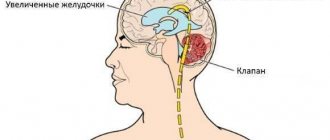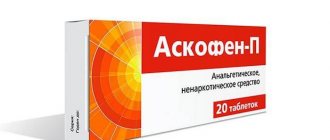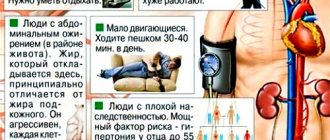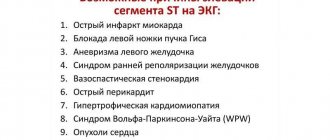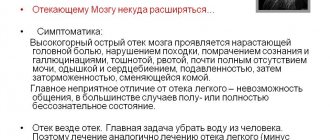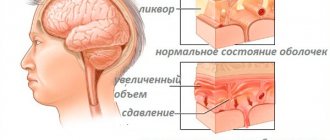What is intracranial pressure
Nature has done everything possible to provide our brain with reliable protection, enclosing it in a strong cranium and surrounding it with a shock-absorbing layer of soft shells. Between them there is a cavity (subarachnoid space) filled with cerebrospinal fluid (CSF).
Liquor constantly circulates, continuously being produced in the lateral ventricles (cavities) of the brain, and then entering the subarachnoid space and being removed (absorbed) through the venous sinuses (large canals that act as a collector).
It is entrusted with three most important functions:
- Protecting the brain from shocks, concussions and other impacts.
- Delivery of oxygen and nutrients to brain tissue cells.
- Removal of waste waste products.
A healthy person maintains a constant volume of cerebrospinal fluid of 100-150 ml. With this amount of cerebrospinal fluid, it creates intracranial pressure equal to 3-15 mm Hg. Art., considered normal.
Do not confuse blood pressure - the force with which blood presses on the walls of blood vessels - and intracranial pressure - the force with which cerebrospinal fluid presses on the soft tissue of the brain. These are different things!
Nature provides mechanisms that regulate the “circulation” of cerebral fluid, but sometimes, for reasons discussed below, they fail, resulting in:
- the production of cerebrospinal fluid increases;
- its circulation slows down;
- the intensity of reabsorption (removal) of cerebrospinal fluid decreases.
The amount of cerebrospinal fluid increases, and the force with which it presses on soft tissue also increases . In this case, they speak of increased intracranial pressure or increased intracranial pressure syndrome.
Based on the form, intracranial pressure is divided into venous, benign, acute and chronic. In untreated cases, treatment is symptomatic.
Ways to lower intracranial pressure
There are many techniques that can be used to relieve the symptoms of increased pressure inside the skull. But only the attending physician can determine the appropriate treatment regimen for the disease.
- Non-surgical treatment - prescribing and using diuretics and eating low-salt foods (salt retains fluid in the body).
- Surgical therapy. In cases where medication is ineffective, the resulting excess cerebrospinal fluid is pumped out using an inserted catheter or the structural tumor is removed.
- Ethnoscience. Taking renal diuretic teas, which help remove excess fluid from the body; also herbal medicine based on soothing and vasodilating herbal infusions, they relieve vascular spasms and expand the distance between the walls of blood vessels, improve blood circulation in the brain.
- Alternative methods include massages and special therapeutic exercises. Such techniques are effective in case of obstructed venous outflow, which provokes an increase in pressure; it appears due to spasms of the muscles of the neck or cervical vertebrae, which compress the veins, preventing normal blood flow.
An increase in intracranial pressure can be situational, isolated in cases of physical activity or due to changes in weather conditions (meteor dependence).
How to measure intracranial pressure
To measure intracranial pressure you will need a special device, so it is impossible to do this yourself
Measuring cranial pressure is possible in two ways:
- Invasive, based on penetration to the brain. Used only when other diagnostic methods have failed.
- Non-invasive. Safe but unreliable. Applicable only for mild cases.
Causes of increased intracranial pressure
Modern medicine does not consider high intracranial pressure as an independent disease, considering it a symptom of certain pathologies associated with venous stasis, edema or brain tumor.
There are several causes of intrinsic cranial hypertension:
- Congenital pathologies: dropsy, insufficient development of venous sinuses.
- Toxicosis during pregnancy and prolonged labor.
- Infectious diseases affecting the central nervous system: inflammation of the meninges (meningitis), inflammation of brain tissue caused by pathogenic microorganisms (encephalitis), penetration of the syphilis pathogen into the nervous tissue of the brain (neurosyphilis).
- Inflammatory diseases of internal organs: otitis media, bronchitis, malaria, gastroenteritis.
- Neoplasms in brain tissue: benign and malignant tumors, abscesses, hematomas.
- Uncontrolled use of certain medications, including Biseptol, tetracycline antibiotics, and oral contraceptives.
- Endocrine disorders: obesity, kidney and liver failure, thyroid disease (hyperthyroidism).
- Various brain injuries that can be caused by external mechanical influences (impacts), stroke, or unsuccessful surgery.
Depending on the reasons that caused increased intracranial pressure, several forms of ICH are distinguished.
Venous
This type of intracranial hypertension is associated with difficulty in the outflow of cerebrospinal fluid. It may be caused by the appearance of blood clots (thrombi) in the venous sinuses. In addition, symptoms of increased intracranial pressure of this type are characteristic of people suffering from cervical osteochondrosis, since this disease compresses the veins responsible for the removal of cerebrospinal fluid.
Another reason is inflammatory processes in the chest and abdominal cavity, disrupting and slowing down the process of cerebrospinal fluid absorption.
Benign
It is considered the least dangerous, reversible form of intracranial hypertension. Its causes are not fully understood, but it is believed that they are associated with increased secretion of cerebrospinal fluid, combined with a decrease in its resorption (absorption).
Most often, young women who are overweight become victims of benign intracranial hypertension.
Symptoms in the form of pressing headaches, concentrated in the forehead and worsening in the morning, usually occur during pregnancy, menstruation, and also with long-term use of contraceptives.
Acute
A dangerous form of intracranial hypertension because it develops suddenly and progresses rapidly. Acute intracranial hypertension often indicates the growth of a tumor or cyst, stroke, rupture of an aneurysm, or the appearance of a hematoma after a traumatic brain injury and requires immediate qualified intervention. In its absence, acute intracranial hypertension can lead to severe disorders of consciousness, coma, and death of the patient.
Moderate or chronic
In this case, the symptoms are not constant and can appear with any weather changes associated with an increase or decrease in atmospheric pressure.
During such periods, the patient is plagued by headaches, he becomes irritable, gets tired easily, and sleeps poorly.
Chronic intracranial hypertension does not pose a direct danger, but it reduces the quality of life and, if left untreated, can cause other, more dangerous diseases.
Symptoms of increased and decreased intracranial pressure
Intracranial pressure (symptoms in adults are nonspecific and can be mistaken for a common illness) is manifested by the following symptoms:
- Headaches that have a dull, bursting nature and are localized mainly in the frontal and occipital regions or diffuse. Unlike the pain syndrome during a migraine attack, the sensation is not concentrated on one side and is dependent on the time of day - it is most active at night and in the morning. Characterized by weak effectiveness or complete lack of effect from taking analgesics.
- Impaired visual perception (double vision, blurred vision of objects, impaired or complete disappearance of peripheral vision). In some cases, there are attacks of complete blindness or a subjective feeling of fog before the eyes. Objectively, a decrease in the activity of the pupillary reaction to light is recorded.
- With a pronounced increase in intracranial pressure, deformation of the eyeballs is possible, up to the impossibility of completely closing the eyelids.
- Dizziness, unsteadiness when walking.
- Absent-mindedness, memory impairment, decreased ability to concentrate.
- Increased sleepiness.
- Instability of blood pressure - fluctuations both upward and hypotension.
- Nausea, vomiting.
- Lethargy, fatigue, asthenia.
- Chills.
- Mood disorders: episodes of depression, sudden changes in emotional background.
- Increased sensitivity of the skin.
- Pain in the back of the head and spine.
- Breathing rhythm disorder, shortness of breath.
- Muscle paresis.
The presence of one of these symptoms does not yet indicate the presence of intracranial hypertension syndrome, however, the combination of several signs in one patient is a reason for a more detailed examination. A decrease in intracranial pressure in adults most often manifests itself as a headache.
It can be either local or diffuse in nature and depends on the position of the patient’s body. It intensifies in the sitting and standing position and weakens significantly or disappears completely in the lying position. The headache tends to get worse with rapid head movements and walking.
The pain syndrome has a fairly high intensity and can be accompanied by the following symptoms:
- nausea;
- vomit;
- dizziness, feeling of unsteadiness;
- visual disturbances (double vision, decreased visual acuity or partial loss of peripheral areas of the visual field, photophobia, oculomotor disturbances in the form of nystagmus);
- facial paralysis;
- sensory disturbance;
- seizures;
- stiffness of the neck and neck muscles;
- noise, ringing in the ears;
- depressed state of consciousness;
- tendency to rapid heartbeat - up to 100 beats per minute;
- pale skin;
- disturbance of the breathing rhythm (with a pronounced decrease - less than 80 ml of water column).
Symptoms of intracranial hypertension
The main symptom of increased ICH in adults is headache.
It has some characteristic features and manifestations:
- Appears early, immediately after waking up.
- It is oppressive in nature.
- Intensifies from bright light, strong sounds, sudden movements, coughing, sneezing, loud conversation.
Indirect symptoms of increased ICP are considered to be problems with vision: blurred visual perception, decreased viewing angle, and attacks of blindness are typical.
Possible deformation of the eyeballs helps to recognize the disease: they protrude, sometimes so much that the patient cannot close his eyes.
How to recognize in adults
There are other symptoms of intracranial pressure in men and women: nervousness, memory and hearing impairment, headaches, fatigue that is not appropriate for the work performed, and spinal pain. There may be sensations similar to those that occur when landing an airplane: pressure on the eyes and ears, nausea and dizziness, vomiting.
Indirect external signs of trouble will be dark circles and bags under the eyes, swelling of the eyelids, and sometimes difficulty breathing and increased blood pressure.
However, many of the listed signs of intracranial hypertension are inherent in other diseases: colds, diseases of the respiratory system and gastrointestinal tract, brain tumors.
Swelling of the eyelids, for example, may be present with kidney or liver disease. Protrusion of the eyeball is observed in cases of dysfunction of the thyroid gland, and pain syndromes in the back can be explained by osteochondrosis. You should not engage in therapy on your own; it is better to consult a specialist if you suspect hypertension.
In newborns
Intracranial hypertension is rare in children. A child who actually suffers from one of the extremely serious illnesses that causes increased intracranial pressure differs from his peers, lagging behind in growth and development. The cause of the pathology may be previous brain infections, severe head injuries, or congenital pathologies of brain development.
Signs of increased intracranial pressure in infants are:
- The baby's head grows too quickly.
- The normal head circumference of a newborn is 34 cm. Every month this number should increase by 1 cm and reach 46 cm by the age of one year. To measure the head, use a centimeter tape. Measurements are taken along a line passing along the most protruding point of the back of the head, above the ears, above the eyebrows.
- Divergence of the skull bones: that is, an increase in the width of the metopic, lamboid and sagittal sutures.
- The fontanel does not overgrow, but, on the contrary, sticks out more and more. Its pronounced pulsation is observed.
- Protrusion of the eyeballs (exophthalmos), strabismus, swelling of the eyelids.
It is important to remember that even the presence of all these symptoms does not give grounds to independently diagnose a child with “intracranial hypertension.” Parents need to show the baby to a specialist for a comprehensive examination.
Symptoms
Signs of increased ICP in adults increase over time. At first it is a slight dizziness and mild pain. However, in the future, patients are increasingly faced with bursting, throbbing pain. It occurs in the morning after a long stay in a horizontal position, accompanied by vomiting. Painkillers are powerless against such pain. Sneezing and severe stress cause noise in the head and nausea.
Signs of VSD appear: blood pressure changes sharply, tachycardia occurs, sweating increases, and pre-syncope occurs.
The person becomes irritable, nervous, and gets tired quickly. He is irritated by loud sounds, any noise, bright lights, surrounding people. Any touch to the neck or spine causes pain. Libido decreases. The face swells and dark circles appear under the eyes. The reaction of the eyes is impaired - double vision appears, the field of vision is limited, fogging and blurriness occurs, the pupils become different sizes, the eyes are always half-open. Pain appears behind them.
Patients often complain of clouding of consciousness, inability to concentrate, hiccups, and hearing loss.
In children, signs of increased intracranial pressure have their own characteristics.
Newborns
When ICP increases, the baby's fontanelle protrudes and pulsates. An important sign is a disproportionate head. Pathology can be suspected by finding tense veins on the head. The skin is marbled with a clearly visible vascular pattern.
The baby cannot close his eyes completely, there are obvious signs of strabismus, the pupils have different sizes. The arms are tense at the chest, the rest of the body is relaxed. He cannot breastfeed and spits up frequently.
Infants
In a child older than 1-2 months, symptoms of increased ICP increase. In a calm state, the fontanel pulsates strongly. The bones of the skull are diverging. Convulsive attacks are observed. The eyes do not close completely - in a dream it is easy to notice the white sclera. The child suddenly freezes and goes limp.
The limbs twitch involuntarily, while the muscles are weak and soft. The baby is lethargic, sleepy, irritable. There is poor weight gain and developmental delay. The head grows very quickly.
Children over 1 year old
After a year, children stutter, shudder in their sleep, often cry, walk on their toes, and are very excitable. Their chin and hands tremble, and their nose often bleeds. They often complain of very severe headaches and pain behind the eyes, splitting of visible objects, and feel discomfort in the eye sockets. Children are weak, lethargic, whiny, they are not interested in anything, they get tired quickly.
Diagnosis of intracranial hypertension in adults
In case of pathologies and suspicion of ICH, a number of studies are required, which are carried out in medical institutions.
The following methods are used:
- Subdiral. A hole is made in the tissues of the skull where the sensor is inserted. The method allows you to obtain a 100% reliable result, but due to the risk of infection, complexity and pain, it is used for people in extremely serious condition.
- Epidural. To take measurements, a special device is placed in the brain tissue, through which impulses are displayed on a computer screen. Their intensity depends on the pressure.
- Intraventicular. Involves inserting a catheter into the lateral ventricle. Today this is an advanced method, since it allows both to measure pressure and pump out excess fluid.
There are also non-invasive methods that can provide only indirect confirmation of the diagnosis, but are absolutely safe.
Performed:
- Measuring the speed of blood movement through the vessels of the brain.
- The eardrum is examined: if there is increased ICP, certain changes (deformations) are possible in it.
- Examination by an ophthalmologist: hypertension is indicated by changes in the veins of the fundus, atrophy of the optic nerve papilla, etc.
- MRI allows one to assess the presence and intensity of predicted changes associated with increased ICP.
How is intracranial pressure measured in an adult?
If a patient exhibits symptoms of increased ICP, the attending physician prescribes a set of measures in order to measure it
- One of the frequent procedures for a comprehensive examination to identify this disease is an examination of the fundus. This procedure is performed in the eye doctor's office. A special solution is instilled into the patient's eyes to dilate the pupils. The optometrist should then use an electric ophthalmic speculum to identify symptoms of ICP. These include: dilated tortuous retinal vessels, changes in eye contour, color and disc tissue
- If the ophthalmologist identifies the ailment described above, the patient should go to a neurologist. Most often, this specialist prescribes magnetic resonance imaging of the brain to make a diagnosis. A patient wearing a helmet with wires connected to special sensors is placed in a field created by an electromagnet. The procedure lasts 40-45 minutes. If a person suffers from claustrophobia, then he will not be able to withstand such a procedure.
- You can also identify the presence of a problem using duplex scanning of the brachiocephalic arteries. They are responsible for supplying the brain with blood. Using an ultrasound machine, a specialist visually assesses the dimensions of blood vessels, the speed of blood flow and other important indicators
- Another procedure that can be used to detect ICP is rheoencephalography. A weak alternating current is passed through the patient's brain and the resulting changes in resistance are recorded. At the same time, the weak current that affects the brain is neither felt nor felt
- But, the most accurate indicator of intracranial pressure can be achieved by surgically inserting a needle into the spinal canal. This procedure can only be carried out by a very experienced specialist. Even a small mistake can lead to patient disability
Diagnosis of intracranial hypertension in newborns
Most research methods for adults are not applicable to children; they are used only in difficult situations when it comes to the life of a child.
In case of uncomplicated conditions of the baby, preference is given to the most gentle methods.
For newborns, an ultrasound is performed through the fontanel. The procedure allows you to determine the size of the ventricles of the brain, the increase of which is one of the main symptoms of increased intracranial pressure.
For older children, the method is not applicable: to confirm or refute the diagnosis, an MRI or echoencephaloscopy is necessary. The results make it possible to judge the amplitude of cerebral vascular pulsations and identify intracranial hypertension.
Besides:
- the fundus is examined;
- external signs of high blood pressure are assessed;
- a conversation is held with the baby’s mother;
- It is being determined whether the child sustained a head injury.
Only the totality of all data allows us to judge the presence or absence of pathology and prescribe adequate treatment.
Reasons for decreased ICP
Reduced intracranial pressure associated with a lack of cerebrospinal fluid is a condition no less dangerous than hypertension, since the “gray matter” loses one of its protective barriers, which increases the risk of brain injury and damage to the blood vessels of the head.
With long-term intracranial hypotension, damage to the heart and internal organs is possible.
The cause of decreased intracranial pressure may be insufficient production of cerebrospinal fluid, increased absorption into the blood, and a decrease in the speed of blood flow.
These phenomena can be caused by:
- Brain damage: mechanical injuries, unsuccessful surgery.
- Long-term use of diuretics and the resulting dehydration of the body.
- Osteochondrosis of the cervical spine.
- Overwork, insomnia.
- Hormonal imbalances.
Symptoms of intracranial hypotension
The main symptom of intracranial hypotension is headache, the intensity of which increases with sudden movements of the head. Usually no painkillers help, but lying down or tilting your head down the pain disappears.
There are other signs of decreased ICP:
- spots before the eyes;
- dizziness;
- convulsions;
- irritability, nervousness;
- unpleasant heaviness in the stomach.
Treatment
What can be done in the treatment of intracranial hypotension depends on the factor that caused it. If the reason is the leakage of cerebrospinal fluid caused by injury, defects in the meninges, or the appearance of fistulas, surgical intervention is indicated. In all other cases, physiotherapy and gymnastics, and drug treatment are used to reduce pressure.
The patient is advised to get rid of any acute or chronic diseases and lead a healthy lifestyle. Traditional medicine can be used as an additional home remedy to reduce ICP.
Methods for reducing intracranial pressure
Veroshpiron and furosemide will help to quickly relieve intracranial hypertension. Losing excess weight is a prerequisite for normal circulation of cerebrospinal fluid.
No-spa, tempalgin, and spasmolgon will help relieve headaches and spasms. The neurologist will give precise recommendations on how to reduce intracranial pressure quickly and safely.
Medical massage of the collar area and self-massage, traditional medicine recipes reduce hypertension.
- You should cover your head with your hands as much as possible. In this case, the thumbs should rest against the back of the head. Massage the occipital area with circular movements for 15 minutes. The exercise is repeated at least twice a day.
- An effective home recipe is to prepare infusions from the fruits of hawthorn and rose hips. Lavender, St. John's wort, and meadow clover will reduce hypertension. The healing properties of horsetail, sage, and peppermint will eliminate swelling and headaches. Dried herbs are poured with hot water and boiled for 2 - 3 minutes. The decoction is infused for half an hour. The medicine should be taken 50 ml three times a day.
- A well-known remedy is an alcohol tincture of meadow clover. Fill the container halfway with dried inflorescences, add vodka or alcohol. Store the container in a cool place, protected from light. After 14 days the tincture is ready.
- Preparation of garlic water. Chop three heads of garlic and mix with three ground lemons. Add one and a half liters of boiled water, leave for 24 hours. Take 1 tablespoon in the morning before meals. Duration of treatment – 3 weeks.
The listed measures serve as a temporary measure to reduce intracranial pressure at home or as an addition to drug therapy. The treatment tactics for increased ICP will be developed by a neurologist after a medical examination.
Related materials:
- Herbs for high blood pressure
- How to normalize blood pressure using folk remedies
- High blood pressure massage
- Effective folk remedies for hypertension
- Secondary arterial hypertension
Share on social networks
Important: The information on the site is not a substitute for medical advice!
How to normalize intracranial pressure
Whatever method of treatment the doctor chooses, the principle is always followed: the disease that caused intracranial hypertension is simultaneously treated, and various means are used to normalize the pressure.
Drug treatment
The patient is prescribed diuretics that will get rid of excess fluid, venotonics and a diet that includes minimal salt intake.
Also prescribed to lower blood pressure:
- Drugs that replenish potassium deficiency. Indicated for ICP caused by cerebral edema.
- Hormonal agents. Prescribed to patients with tumors and meningitis.
- Antispasmodics. Eliminate vasospasm and normalize blood flow.
- Antibiotics (for infections affecting brain tissue).
Additionally, the doctor may recommend sedatives, vitamins (in capsules or tablets) and drugs that can improve brain function.
Surgery
If conservative therapy is ineffective, excess cerebrospinal fluid is removed with a catheter.
In case of a brain tumor, the tumor is removed surgically.
Non-traditional or alternative methods
Massages and gymnastics will help treat headaches caused by increased intracranial pressure, if the cause is obstructed venous outflow.
The use of folk remedies
Treatment at home is applicable only when the cause of increased ICP is excess weight, stress, osteochondrosis, or insufficient venous outflow. Traditional medicine offers herbal teas that help eliminate excess fluid, decoctions of herbs that have a vasodilating effect, which can normalize blood circulation in the brain.
Tested remedies are a mixture of honey and lemon juice, tinctures based on rosehip, plantain, and valerian.
They help a lot:
- Mustard foot baths. 2 tablespoons of powder in a bowl of warm water. Keep your feet in the solution for 15 minutes.
- Head massages with pollen and honey in the ratio: 2:1. The composition is kept for 3 days in a dark place. Rub in circular movements into the back of the head and back of the neck.
Any unconventional methods can only temporarily relieve symptoms, but not eliminate the cause itself. They are used only as a complement to therapy and after consulting a doctor!
Why is intracranial pressure dangerous in adults?
With this disease, the ducts and fluid cavities may increase in size (hydrocephalus). The skull is a closed cavity. As the ducts of the cerebrospinal fluid increase, the mass of the medulla decreases. Which can lead to critical consequences for health and normal functioning.
The magnitude of the danger of this disease depends on the rate of increase in intracranial pressure
- If this does not happen very quickly, then the brain may have time to adapt to such changes. But, at the same time, he will “express” his dissatisfaction in the form of pain
- The more often such a disease manifests itself, the more headaches the sufferer will have. This usually happens in the morning hours. Also, an increase in ICP can lead to fatigue, loss of performance, apathy and drowsiness.
- People who have this disease often become susceptible to painful sensitivity to changes in atmospheric pressure and weather changes
- With increased intracranial pressure, an adult may experience memory loss, blurred vision and general malaise.
- But, do not think that this problem can only cause discomfort, but is not life-threatening. Frequent increases in intracranial pressure over time can lead to the body no longer being able to cope with such a load.
- The expansion of the channels and cavities of the brain, which occurs with an increase in ICP, can cause compression of the cerebral hemispheres and destruction of vital areas
- The most serious cause of the problem described above is the blockage of the cerebrospinal fluid ducts due to the formation of a tumor
When is immediate medical intervention required?
Increased intracranial pressure can be dangerous if caused by injury, tumor, or swelling of the brain. And then no home methods for rapid reduction are applicable, urgent help is needed.
In particular, you should urgently consult a specialist if:
- disorders of consciousness;
- fainting;
- convulsions;
- disorders of the heart and respiratory system;
- soreness and feeling of tension in the back of the head;
- sharply increasing headaches;
- unexplained drowsiness or, on the contrary, excessive agitation;
- for any unusual phenomena, especially if they began to appear after a head injury (impact).
Delay can have the most severe consequences, even death. You need to lower your blood pressure urgently!
Forecast
The symptomatic severity of the disease in patients with intracranial pressure occurs unexpectedly. And a properly selected course of treatment can improve the patient’s general condition, resulting in a reduction in the symptoms of the disease within a few days, immediately after the start of treatment.
And yet, a positive effect will follow immediately as soon as doctors are able to identify and even eliminate the entire underlying cause of pain, which also influenced the development of the disease. It could be a tumor or an excessive amount of cerebrospinal fluid.
Intracranial pressure in the adult generation is a very dangerous pathology, as it can cause serious consequences. To avoid all this, you need to carefully approach any treatment and, of course, follow all precautions and follow the recommendations of your doctor.
Prevention of intracranial hypo- and hypertension
Since there are a huge number of reasons why intracranial pressure readings may go beyond normal limits, there are no preventive measures that can prevent this phenomenon with a 100% guarantee.
However, the risk of this pathology will be reduced by:
- Active lifestyle, playing sports. When working sedentarily, it is recommended to take breaks every hour, during which you perform exercises that can increase the supply of oxygen to the brain: head tilts, circular movements, neck massage.
- Normalization of weight. Excess kilograms several times increase the risk of developing brain diseases and, accordingly, the likelihood of ICP deviations.
- Healthy eating, giving up bad habits.
- Whenever possible, prevent stress, protect your nervous system from shocks.
It is much easier to identify pathology in the early stages, determine its cause and find the optimal treatment method if you undergo an examination of the whole body 1 or 2 times a year, be more attentive to your health and, if there are any signs of trouble, seek advice from a doctor.
The treatment prescribed by your doctor will be more effective if you help your body with:
- Running, gymnastics, swimming.
- If you are overweight, you should get rid of it as quickly as possible by changing your diet, eating as much plant-based, low-calorie foods as possible and reducing salt intake to a minimum.
- Use a flat, hard pillow to sleep, then you will no longer be bothered by nighttime surges in ICP caused by compression of the cervical arteries. A simple self-massage of the head and collar area has a similar effect.
- Quit smoking and alcohol, do not sit excessively in front of the TV or computer, try to adhere to the correct alternation of physical and mental activity.
Methods and methods for treating increased intracranial pressure
In order to choose a treatment method for increased ICP, it is necessary to establish the root cause of its occurrence. It does not matter which method of treatment is chosen, the main thing is to be under the supervision of a doctor. It is advisable to combine treatment of the underlying disease, which is distinguished by increased ICP, and treatment of symptoms of increased ICP. Complex treatment is more effective than separate, alternating treatment.
The following treatment methods can be prescribed and used:
- Diuretic drugs - Veroshpiron, Diacarb, Mannitol - help remove excess fluid from the body.
- Drugs aimed at eliminating venous blood stagnation.
- Caffeine-containing drugs, which also have a venotonic effect.
- Potassium-containing drugs that increase brain nutrition by improving electrolyte balance and tissue metabolism.
- Corticosteroid hormones that neutralize brain swelling after traumatic brain injury or stroke.
- Myotropic antihypertensive drugs have a vasodilator and antispasmodic effect.
- Antibacterial agents to avoid various neuroinfections.
- Neurodynamic drugs are used to improve brain function and help activate mental processes and memory mechanisms.
- Sedatives calm the central nervous system, have a vasodilating effect, improve sleep quality and brain function.
- Vitamin complexes improve metabolism and strengthen the body.
- The surgical method is used by inserting a catheter into the skull to pump out excess cerebrospinal fluid.
- Physiotherapy: electrophoresis using substances from the group of phosphodiesterase inhibitors is used to improve brain nutrition; massage, exercise therapy, etc.
- Alternative medicine.
Therapy for increased intracranial pressure occurs in stages, depending on the level of neglect of the disease:
- Stage I – the cause of the disease is eliminated. If the cause is a tumor or hematoma, then the patient undergoes surgery to remove it. If the cause is excess cerebrospinal fluid, then a bypass operation is performed, the essence of which is to create an additional channel for the drainage of cerebrospinal fluid
- Stage II – influencing the level of ICP with the help of medications. Osmotic diuretics are used to control the level of cerebral fluid, hormonal agents, and nootropic drugs of mixed action.
- Stage III – surgical manipulations. Inserting a catheter to pump out excess cerebral fluid (CSF).
- Stage IV – adherence to the diet regimen. Limiting the amount of salt consumed, following the prescribed diet.
- Stage V – manual therapy.
Foods for ICP
In rare cases, after treatment, ICP decreases to a critical level. In such cases, you need to know the accompanying symptoms:
- Weakness, lethargy.
- Dizziness.
- Nausea.
Complications: the dangers of increased ICP
Under the influence of increasing pressure, processes are triggered in the brain tissues, leading to their deformation and gradual atrophy.
Among the dangers of ICH are the following diseases:
- paralysis;
- stroke;
- difficulty speaking;
- impaired coordination of movements;
- arrhythmia;
- vision problems.
And with intracranial pressure reaching a value of 30 mm. rt. Art., brain changes incompatible with life are possible.
